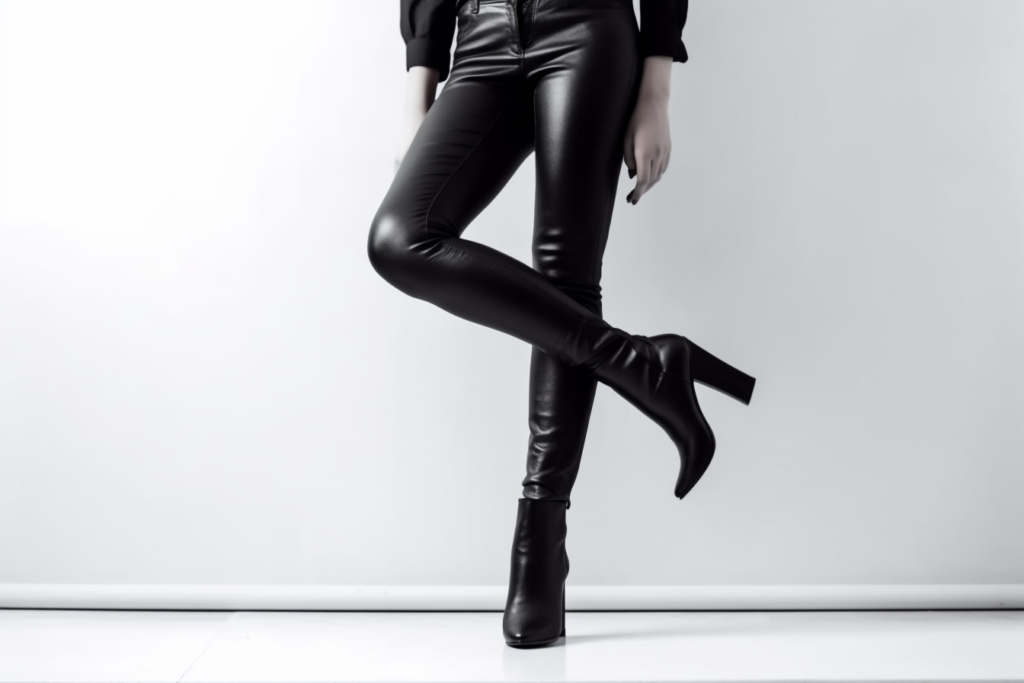Are Wedges Bad For Your Feet?

We’ve all been there, ladies. You spot the perfect pair of wedges, and your heart skips a beat. But then you start to wonder: Are wedges bad for your feet? Well, buckle up buttercup, because we’re about to take a ride on the roller coaster of wedge-wearing and find out.
Wedges are one of the most versatile shoes out there – they can easily take you from a day at the office to a night out with the girls. But with all that versatility comes a downside. Wedges are notorious for causing foot pain, blisters, and a variety of other problems. So, is it worth the risk? Let’s explore the pros and cons of wearing wedges, common foot problems associated with them, and tips for reducing foot pain. Then we’ll look at some alternative shoe options. So, come along and join us to find out – are wedges really bad for your feet?
Pros of Wearing Wedges
If you’re looking for a stylish shoe that gives you a little extra height, then you’ll love the benefits of wearing wedges! From the latest trends in wedges to the look and feel of a classic wedge heel, there are so many reasons why you should give them a try. Wedges offer a great alternative to traditional high heels, providing a more comfortable and secure fit. Wedges are much easier to walk in than traditional high heels, making them perfect for those days when you have to be on your feet for long periods of time. Plus, because the heel is wider and more secure, you don’t have to worry about them slipping off like you do with high heels.
One of the biggest advantages of wearing wedges is the extra height they provide. Unlike high heels, wedges offer a much more stable platform, making it easier to maintain balance while walking. Plus, they come in a variety of heights, allowing you to choose how much extra height you want to add. Wedges also provide more cushion than traditional heels, making them more comfortable to wear for long periods of time. Additionally, because the heel is wider, you don’t have to worry about them digging into the back of your foot like heels do.
Wearing wedges can help you elevate your look and add a touch of glamour to any outfit. Whether you’re looking for a subtle or dramatic look, there is a wedge for every occasion. And with so many styles to choose from, you can find a pair that is perfect for your personal style. So if you’re looking for a stylish and comfortable way to add some extra height, then wedges are definitely worth considering. To move on to the cons of wearing wedges, let’s explore the disadvantages.

Cons of Wearing Wedges
You may experience discomfort in your lower extremities when wearing this type of footwear. Wedges may be designed in a way that puts pressure on your feet in an unnatural way, leaving them feeling sore. Wedges may also be less comfortable than shoes with other heel shapes due to the lack of cushioning materials in the sole. Here are four specific cons of wearing wedges:
- The wedge design can cause discomfort due to the weight of the shoe being distributed unevenly across the foot.
- The materials used in the sole of wedges can be hard, resulting in a lack of cushioning and arch support.
- The height of the wedge can cause the ankle to be overstretched and strained, leading to an increased risk of injury.
- The sole of a wedge can become slippery, making it difficult to move around in them.
Wearing wedges can cause problems to your feet, such as increased risk of overpronation and plantar fasciitis, which can lead to long-term foot issues. It’s important to choose a pair of wedges that provide enough cushioning and arch support to avoid these issues. Moreover, it’s important to take breaks when wearing wedges and to wear them in moderation, as overusing them can make your foot problems worse. With that said, let’s move on to discussing common foot problems linked to wedges.
Common Foot Problems Linked to Wedges
We have all heard the phrase that beauty is pain, and that couldn’t be more true when it comes to wearing wedges. Wearing wedges can cause some unpleasant foot issues, such as overpronation and plantar fasciitis, so be careful when choosing this type of footwear. Wedges can lead to poor posture alignment, especially if the cushioning material is not of good quality, causing extra strain on the feet. In addition, the height of the wedge can cause the feet to slide forward, leading to an unnatural angle in the foot.
The combination of the angle and the lack of cushioning can lead to long-term foot problems, such as heel spurs, bunions, and even stress fractures. A good wedge should provide the feet with the necessary support and cushioning to avoid these issues. If you are going to wear wedges, it is important to make sure that the fit is correct and that there is enough cushioning to support your feet.
It is also important to take regular breaks from wearing wedges and to alternate with other types of shoes. Taking regular breaks will help the feet to recover and prevent future problems. With that in mind, let’s move on to tips for reducing foot problems from wedges.
Tips for Reducing Foot Problems from Wedges
We all want to look stylish, but when it comes to wedges it’s important to remember that there are risks. Taking preventative measures when it comes to wearing wedges can save you from a world of pain; for instance, studies show that 80% of people who wear wedges daily experience some kind of foot issue. The best way to avoid this is to take regular breaks while wearing your wedges. Taking a break every hour or so can help to reduce the pressure that your feet are under and can help to reduce the risk of injury and discomfort.
Another way to reduce the chances of foot problems when wearing wedges is to make sure that you are wearing socks. Wearing socks can help to absorb some of the impact of the wedge and can also reduce the amount of friction between your feet and the shoe. This can help to reduce the risk of blisters and other painful foot issues.
Aside from taking regular breaks and wearing socks, it’s important to make sure that you are buying the correct size of wedge. Putting your feet in shoes that are too tight can cause tightness and discomfort, so it’s important to make sure that your wedges fit properly. Taking these steps can help to reduce the risk of foot problems when wearing wedges. Recognizing the potential for discomfort is the first step towards avoiding it, and taking these preventative measures can help to ensure that your feet stay healthy and happy. Looking for alternatives to wedges is the next logical step.
Alternatives to Wedges
For those looking to avoid foot pain, there are plenty of stylish alternatives to wedges available. From sneakers to ballet flats, there is something for everyone. Here are some of the best options to consider when deciding on a lower heel height:
- Ballet flats: Ballet flats are perfect for those looking for a stylish and comfortable alternative to wedges. They come in a variety of colors and materials, so you can find the perfect fit for your outfit. Plus, the low to no heel height makes them much more comfortable than a wedge.
- Sneakers: Not only are sneakers comfortable, but they also come in plenty of fashionable designs. You can choose from a variety of colors, patterns, and materials to find the perfect style for you.
- Loafers: Loafers are a great option for those who want to look stylish while still maintaining a low heel height. They come in a variety of colors and materials, so you can find something that works with your wardrobe. Plus, they are usually very comfortable, so you don’t have to worry about foot pain.
There are plenty of stylish alternatives to wedges that can fit your comfort levels and still keep you looking fashionable. From ballet flats to loafers, you can find something that works for your wardrobe without sacrificing your foot health.

Conclusion
We’ve seen that there are pros and cons to wearing wedges, and they can be a source of foot pain if not worn correctly. But the good news is that there are ways to reduce the risk of foot pain associated with wedges. With a few simple tips, you can keep your feet happy and healthy while still enjoying the stylish look of wedges. Plus, there are plenty of alternatives out there that can provide a similar look without the same risk of foot pain. So, don’t be afraid to rock a pair of wedges, just be sure to take a few extra precautions. You’ll be strutting your stuff in style in no time.

